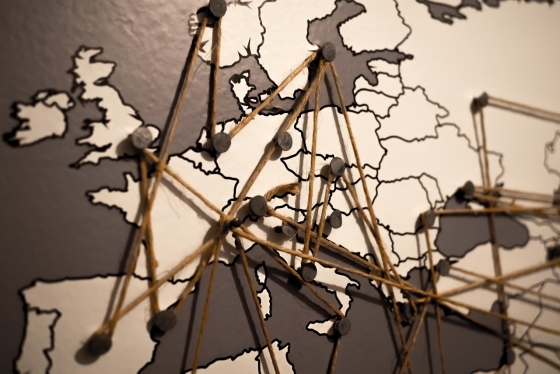Light Bulbs Explained

History Of Light Bulbs
Incandescent lamps were developed from early experiments in which electrical current was passed through filaments of noble metals such as platinum. The problem of the filament burning out after a few minutes, and the low resistance and high current draw made incandescent lamps a failure in practical terms until the developments by Edison and Swan in the 1870s. In 1802 Sir Humphry Davy had the most powerful battery in the world at the Royal Institution of Great Britain. In that year he created the first incandescent light by passing the current through a thin strip of platinum, chosen because the metal had a very high melting point. It was not bright enough neither did it last long enough to be considered useful, but it was the precedent behind the efforts of scores of experimenters over the next 75 years until Thomas Edisons creation of the first practical incandescent lamp in 1879. After many experiments with platinum and other metal filaments, Edison returned to a carbon filament. The first successful test was on October 22, 1879 and it lasted 13.5 hours. Edison continued to improve this design and by Nov 4, 1879, filed for an U.S. patent for an electric lamp using a carbon filament or strip coiled and connected to platina contact wires. Although the patent described several ways of creating the carbon filament including using cotton and linen thread, wood splints, papers coiled in various ways, it was not until several months after the patent was granted that Edison and his team discovered that a carbonised bamboo filament could last over 1200 hours. Click here for our range of Incandescent Light Bulbs
Safety When Working With Light Bulbs
Light Bulbs are generally safe and easy to use but there are a few things to keep in mind. Light Bulbs come in many different caps and therefore insert into the fittings differently. So you don’t want to be forcing bulbs into the wrong fittings or twisting a push fit bulb. Click here for a lamp base overview
Light Bulbs can get very hot when in use so it is important to let them cool before touching them. Another important factor to consider with heat from light bulbs is that you will not want to be placing the bulbs near any combustible materials or furnishings. The Environment Agency has determined that fluorescent tubes, sodium and metal halide lamps are now classified as hazardous waste and should only be taken to landfill at appropriately classified and licensed landfill sites. We believe that there are now less than 6 landfill sites in Britain able to accept this type of waste and waste producers have a Duty of Care to ensure the lamp residues are only taken to such sites unless all mercury contaminants can be first removed. Click here for details & products on lamp disposal
Energy Saving Light Bulbs
Traditional bulbs waste a lot of their energy by turning it into heat rather than light. Energy Saving Recommended bulbs work in the same way as fluorescent lights, an electric current passes through gas in a tube, making the tubes coating glow brightly. This means that they use less energy and are cool to the touch. Energy saving light bulbs last up to 12 times longer than ordinary light bulbs and can save you £9 per year in electricity (and 38 kilograms of CO2 ) or £100 over the bulbs lifetime. If everyone installed just one energy saving light bulb the CO2 emissions saved would fill 2 million double decker buses. And if each house installed three energy saving bulbs, it would save enough energy to run the countrys streetlights for a year. Click here for Energy Saving comparison
You can now also buy low energy light fittings which will only take low energy light bulbs. These use a ballast or transformer fitted into the base of the light fitting. It controls the supply of electricity to the bulb, allowing for a small surge of power for a millisecond to light the bulb and then reducing the electricity flow to a very low level. Low energy fittings require a pin-based energy saving bulb. This is a different fitting to a conventional bulb but will ensure that the bulbs you buy in future will always save energy, money and the environment. Click here for Energy Saving Light Bulbs
Compact Fluorescent Lamps
Compact Fluorescent Lamps (CFLs) are a modern type of light bulb that will fit into a standard light fitting, usually a bayonet fitting in the UK, but CFLs are also available with Edison screw fittings. Most CFLs either consist of a number of short glass sticks, or two or three small tubular loops. Sometimes, these are enclosed in a glass bowl or made to look like a traditional bulb. There are also some older CFLs that look light a clear or white glass jam-jar and are much heavier, but these are less efficient and are not recommended. CFLs work in much the same way as a fluorescent strip light: the inside is coated with a phosphor that gives off the light and there is an electronic ballast to start the lamp operating. CFLs are often called low energy lamps because they use less energy than the traditional tungsten filament bulbs that they replace. As they plug in directly to the normal light fittings they work off the UKs standard 230V supply and should not be confused with low-voltage lamps, which do not offer significant energy or cost savings. Modern CFLs typically have a life span of between 8,000 and 15,000 hours, whereas incandescent lamps are usually manufactured to have a life span of 750 hours or 1000 hours. These lifetimes are quoted according to IEC60969, which specifies that life to 50% of failures shall be not less than value declared by the manufacturer. Some incandescent lamps have shorter designed lifespans, such as those used for lighting photographic studios and used in overhead projectors. In practice the lifetime of any actual light bulb, CFL or incandescent, depends on many factors including manufacturing defects, exposure to voltage spikes, mechanical shock, frequency of cycling on and off and ambient operating temperature, among other factors. Click here for our range of Compact Fluorescent Lamps
Light Bulb Glossary
Dichroic
Dichroic bulbs provide cool beams of light, a special coating reflects heat backward into the lighting fixture and spreads a clear bright beam of light forwards in various angles. These types of
Light Bulbs are often used in conjunction with fixtures that have a reflector such as downlighters.
Ballast
Ballasts vary greatly in complexity. They can be as simple as a series resistor as commonly used with small neon lamps. For higher-power installations, too much energy would be wasted in a resistive ballast, so alternatives are used that depend upon the reactance of inductors, capacitors, or both. Finally, ballasts can be as complex as the computerized, remote-controlled electronic ballasts used with fluorescent lamps.
Black Light Blue
Black light is the common name for a lamp emitting electromagnetic radiation that is almost exclusively in the soft near ultraviolet range, and very little visible light. In many areas this type of lighting is more commonly referred to as simply UV light.
Burning Position
Operating filament lamps in the wrong position may cause the lamp to fail immediately or fail after an abbreviated life. This type of failure can sometimes be detected by the presence of small globules of molten metal adhering to the bulbs inner surface beneath the filament.
Colour Temperature
All fluorescent tubes, compact fluorescent and energy saving lamps are available in different colour renditions, or burning temperatures measured in Kelvin. For example an energy saving lamp with a colour temperature of 3500K burns at 3500 Kelvin this colour is known as white. Click here for our Colour Temperature chart
Compact Fluorescent
Compact fluorescent bulbs are made in special shapes (which require special technologies) to fit in standard household light sockets, like table lamps and ceiling fixtures. In addition, most compact fluorescent lamps have an integral ballast that is built into the light bulb.
Fluorescent
A fluorescent lamp is a gas-discharge lamp that uses electricity to excite mercury vapor in argon or neon gas, resulting in a plasma that produces short-wave ultraviolet light. This light then causes a phosphor to fluoresce, producing visible light.
Aluminium Reflector
Many spot and flood lamps are manufactured using a thin film of reflective aluminium deposited on the inside of the glass. Unlike dichroic reflectors, this reflects both light and heat forwards out of the lamp.
Long Life
Long life light bulbs last longer than standard light bulbs.
Metal Halide Lamp
Metal halide lamps, a member of the high-intensity discharge (HID) family of lamps, produce high light output for their size, making them a compact, powerful, and efficient light source.
Wattage
The unit for measuring electrical power. It defines the rate of energy consumption by an electrical device when it is in operation. The energy cost of operating an electrical device is calculated as its wattage times the hours of use. In single-phase circuits, it is related to volts and amps by the formula, Volts x Amps x PF = Watts. Generally, the higher the “Wattage” of a light, the brighter it is, but this does however depend on the type of lamp.
Created by Steve Ellwood on 8th May, 2007
Author
 | Steve EllwoodQualified as an Electrician, founder of BLT Direct |



